Side effects for vitamin d 50000 iu. Vitamin D 50000 IU: Benefits, Risks, and Side Effects Explained
What are the potential benefits of high-dose vitamin D supplementation. How can excessive vitamin D intake impact your health. What side effects should you watch out for when taking 50000 IU vitamin D weekly.
Understanding Vitamin D and Its Importance
Vitamin D, often referred to as the “sunshine vitamin,” plays a crucial role in maintaining overall health and well-being. This fat-soluble vitamin is unique because our bodies can produce it when our skin is exposed to sunlight. However, many individuals struggle to obtain sufficient vitamin D from sunlight alone, leading to the popularity of supplements.
But why is vitamin D so important? It serves several vital functions in the body:
- Promotes calcium absorption for strong bones and teeth
- Supports immune system function
- Aids in cell growth and differentiation
- Helps regulate mood and reduce the risk of depression
- May play a role in reducing the risk of certain cancers
Given its significance, it’s no wonder that many people turn to supplements to ensure they’re getting enough of this essential nutrient. One such supplement that has gained attention is the high-dose 50000 IU vitamin D3, typically prescribed for weekly use.
![]()
Exploring 50000 IU Vitamin D3 Supplementation
When it comes to vitamin D supplementation, 50000 IU (International Units) is considered a high dose. This form of supplementation is usually prescribed by healthcare providers for specific reasons, rather than being used as a daily supplement.
Why might someone be prescribed such a high dose? There are several potential reasons:
- Severe vitamin D deficiency
- Certain medical conditions that impair vitamin D absorption
- Limited sun exposure due to geographic location or lifestyle factors
- Dark skin, which produces less vitamin D in response to sunlight
It’s important to note that 50000 IU vitamin D3 is typically prescribed for weekly use, not daily consumption. This dosage far exceeds the recommended daily intake for most adults, which ranges from 600 to 800 IU.
Potential Benefits of High-Dose Vitamin D Supplementation
While research is ongoing, some studies suggest that high-dose vitamin D supplementation may offer several potential benefits:
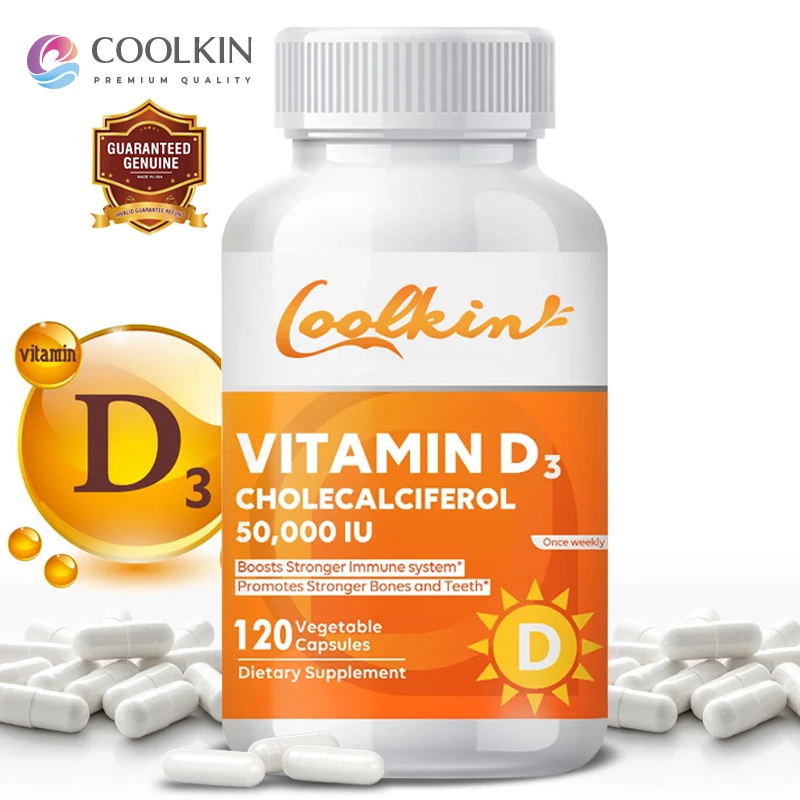
Improved Bone Health
Vitamin D is crucial for calcium absorption and bone mineralization. High-dose supplementation may help improve bone density, particularly in individuals with vitamin D deficiency or osteoporosis.
Enhanced Immune Function
Vitamin D plays a vital role in immune system regulation. Some research suggests that adequate vitamin D levels may help reduce the risk of autoimmune diseases and improve the body’s ability to fight infections.
Mood Regulation
There’s growing evidence linking vitamin D deficiency to an increased risk of depression and anxiety. High-dose supplementation may help alleviate symptoms in some individuals.
Potential Cancer Risk Reduction
While more research is needed, some studies indicate that maintaining adequate vitamin D levels may help reduce the risk of certain cancers, including colorectal, breast, and prostate cancer.
Understanding the Risks of High-Dose Vitamin D
Despite its potential benefits, high-dose vitamin D supplementation is not without risks. It’s crucial to be aware of the potential dangers associated with excessive vitamin D intake:

Hypercalcemia
One of the most significant risks of vitamin D toxicity is hypercalcemia, or elevated blood calcium levels. This condition can lead to a range of symptoms, including:
- Nausea and vomiting
- Weakness and fatigue
- Confusion and disorientation
- Kidney problems
Kidney Stones
Excessive vitamin D can increase calcium absorption, potentially leading to the formation of kidney stones in susceptible individuals.
Cardiovascular Risks
Some studies suggest that very high levels of vitamin D may increase the risk of heart disease and stroke, although more research is needed to confirm this association.
Side Effects to Watch For When Taking 50000 IU Vitamin D
While vitamin D is generally well-tolerated, high doses can lead to various side effects. When taking 50000 IU vitamin D weekly, it’s important to be aware of potential adverse reactions:
- Digestive issues: Nausea, vomiting, and constipation
- Fatigue and weakness
- Headaches
- Loss of appetite
- Increased thirst and urination
- Dry mouth
- Metallic taste
If you experience any of these side effects, it’s crucial to consult your healthcare provider. They may need to adjust your dosage or recommend alternative treatments.

Who Should Consider High-Dose Vitamin D Supplementation?
High-dose vitamin D supplementation is not suitable for everyone. It’s typically recommended for individuals with:
- Severe vitamin D deficiency
- Certain medical conditions affecting vitamin D absorption
- Limited sun exposure due to geographic location or lifestyle factors
- Dark skin, which produces less vitamin D in response to sunlight
- Obesity, as excess body fat can interfere with vitamin D utilization
Is high-dose vitamin D supplementation right for you? Only a healthcare professional can make this determination based on your individual health status, risk factors, and vitamin D levels.
Monitoring Vitamin D Levels: Why It’s Crucial
When taking high-dose vitamin D supplements, regular monitoring of blood vitamin D levels is essential. This helps ensure that you’re maintaining optimal levels without risking toxicity.
How Often Should Levels Be Checked?
The frequency of vitamin D testing can vary depending on individual circumstances. Generally, healthcare providers may recommend testing:
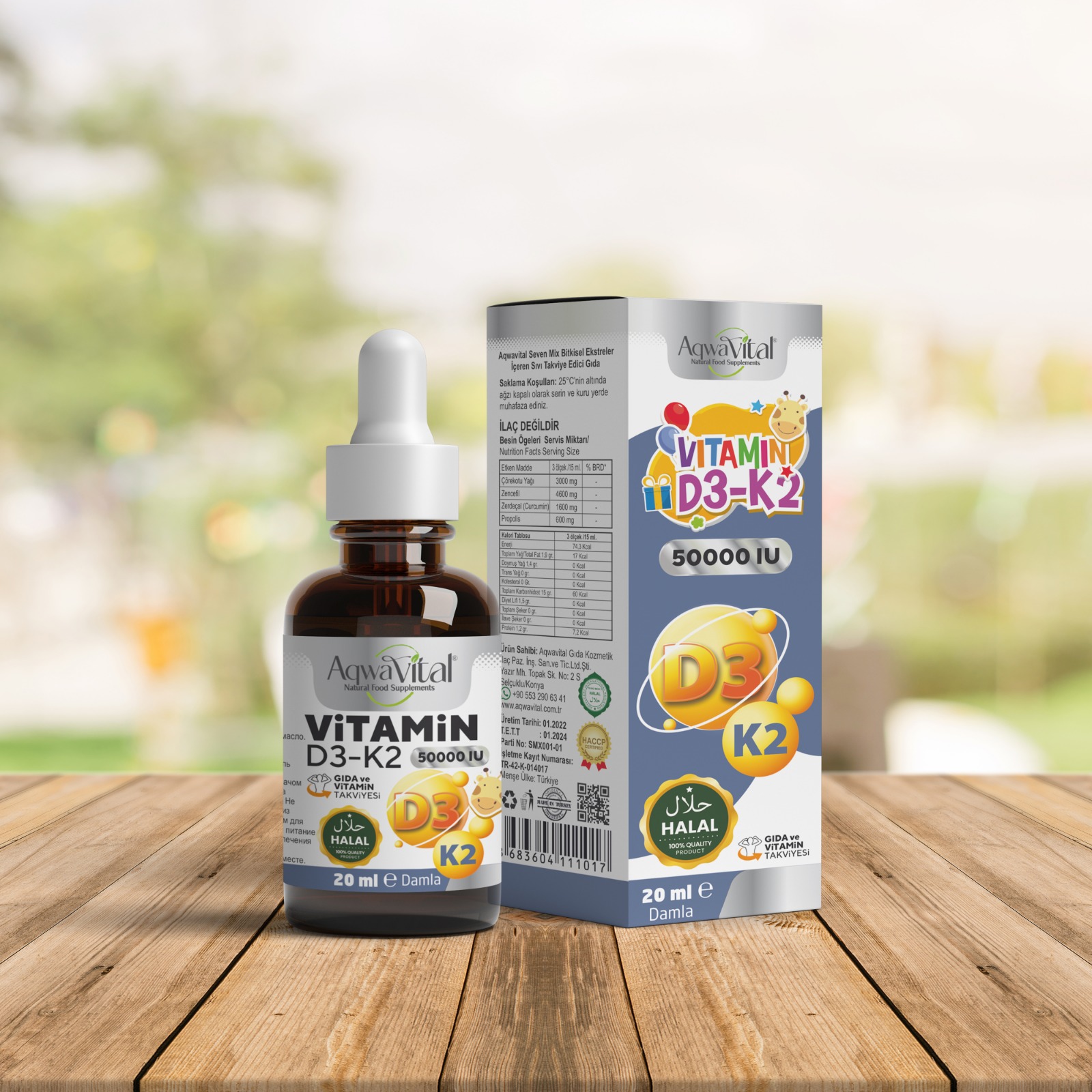
- Before starting high-dose supplementation
- 3-4 months after beginning treatment
- Annually or bi-annually for maintenance
Your healthcare provider will determine the most appropriate testing schedule based on your specific situation.
What Are Optimal Vitamin D Levels?
While there’s some debate about optimal vitamin D levels, most experts agree that a blood level of 25-hydroxyvitamin D between 30-50 ng/mL (75-125 nmol/L) is sufficient for most people. Levels above 50 ng/mL (125 nmol/L) are generally not associated with additional health benefits and may increase the risk of adverse effects.
Alternatives to High-Dose Vitamin D Supplementation
If you’re concerned about vitamin D deficiency but wary of high-dose supplementation, there are several alternatives to consider:
Moderate-Dose Supplements
For many people, a daily supplement of 1000-2000 IU may be sufficient to maintain adequate vitamin D levels. This lower dose carries a reduced risk of side effects while still providing significant benefits.
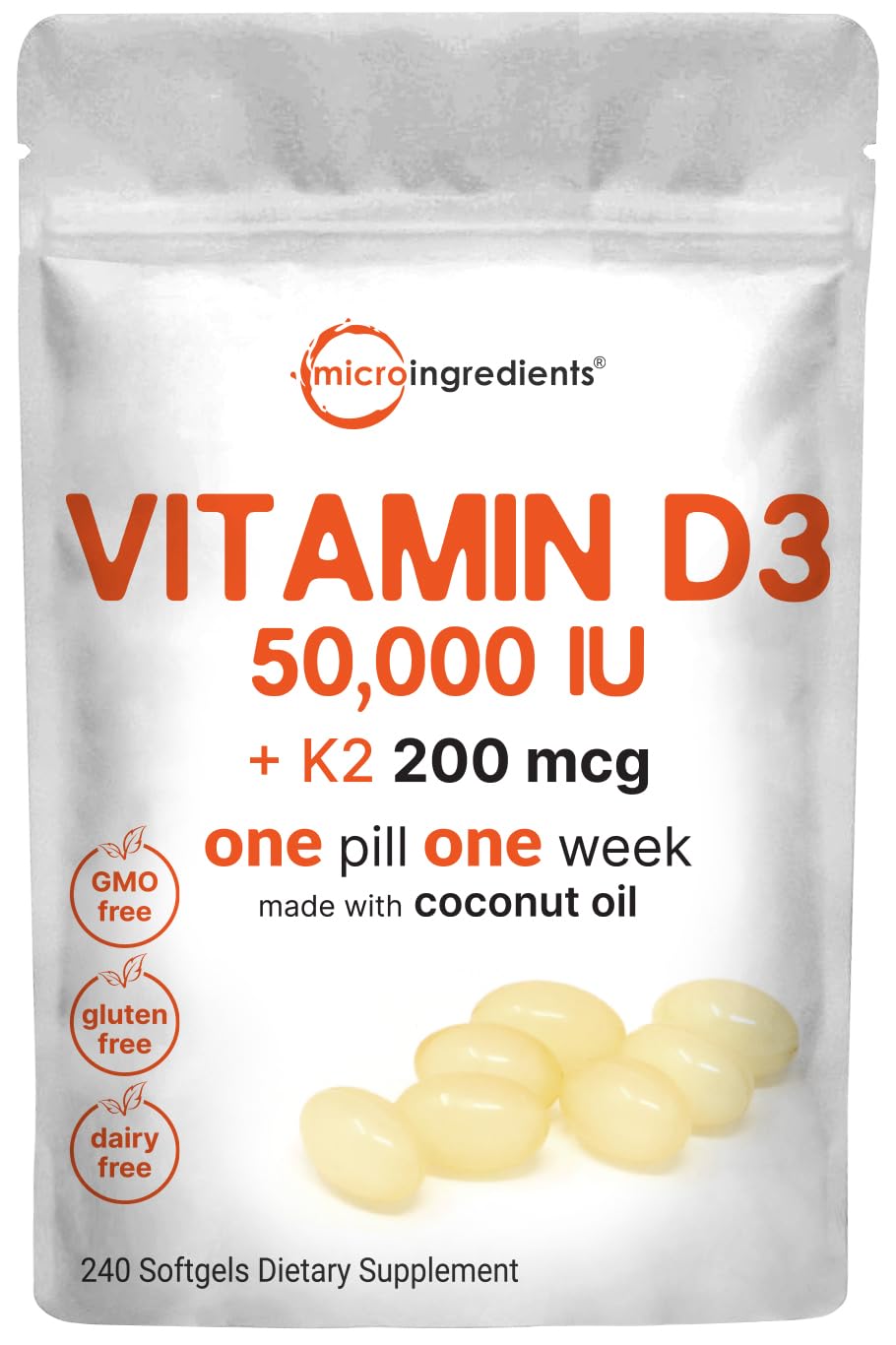
Sunlight Exposure
Spending time in the sun is the most natural way to boost vitamin D levels. Just 10-30 minutes of midday sunlight several times per week can help many people maintain adequate vitamin D status. However, it’s important to balance sun exposure with skin cancer risk.
Dietary Sources
While few foods naturally contain high levels of vitamin D, incorporating vitamin D-rich foods into your diet can help. Some good sources include:
- Fatty fish (salmon, mackerel, tuna)
- Egg yolks
- Mushrooms exposed to UV light
- Fortified foods (milk, orange juice, cereals)
Combining these strategies may help you maintain optimal vitamin D levels without resorting to high-dose supplementation.
The Importance of Professional Guidance
When it comes to high-dose vitamin D supplementation, professional medical guidance is crucial. A healthcare provider can:
- Assess your individual risk factors and health status
- Order appropriate blood tests to determine your vitamin D levels
- Recommend the most suitable dosage and form of supplementation
- Monitor your progress and adjust treatment as needed
- Advise on potential interactions with other medications or health conditions
Self-prescribing high-dose vitamin D can be dangerous. Always consult with a healthcare professional before starting any new supplement regimen, especially one involving high doses.

In conclusion, while 50000 IU vitamin D supplementation can offer significant benefits for certain individuals, it’s not without risks. Understanding the potential side effects, monitoring your levels closely, and working with a healthcare provider are all crucial steps in safely navigating high-dose vitamin D supplementation. By taking a thoughtful, informed approach, you can harness the power of vitamin D to support your overall health and well-being.
Side Effects, Benefits, and Risks
If you’re looking to boost your vitamin D levels, you may have heard about taking 50000 IU vitamin D3 weekly. But is it safe? What are the potential side effects, benefits, and risks? In this blog post, we’ll explore everything you need to know about this high-dose vitamin D supplement.
What is Vitamin D?
Vitamin D is a fat-soluble vitamin that plays a crucial role in bone health, immune function, and overall well-being. Our bodies can produce vitamin D when our skin is exposed to sunlight, but many people don’t get enough vitamin D from sunlight alone. That’s where supplements come in.
What is 50000 IU Vitamin D3 Weekly?
50000 IU vitamin D3 weekly is a high-dose vitamin D supplement that’s typically prescribed by a healthcare provider. It’s important to note that this dose is much higher than the recommended daily intake of vitamin D, which is 600-800 IU for most adults.
What are the Benefits of 50000 IU Vitamin D3 Weekly?
Some potential benefits of taking 50000 IU vitamin D3 weekly include:
- Improved bone health
- Reduced risk of falls and fractures in older adults
- Reduced risk of certain cancers
- Improved immune function
- Reduced risk of depression and anxiety
However, it’s important to note that more research is needed to fully understand the benefits of high-dose vitamin D supplementation.
What are the Side Effects of 50000 IU Vitamin D3 Weekly?
While vitamin D is generally considered safe, taking high doses can lead to side effects. Some potential side effects of taking 50000 IU vitamin D3 weekly include:
- Nausea and vomiting
- Constipation
- Weakness and fatigue
- Headache
- Loss of appetite
- Increased thirst and urination
- Kidney damage (with long-term use of high doses)
If you experience any of these side effects, it’s important to talk to your healthcare provider.
What are the Risks of 50000 IU Vitamin D3 Weekly?
While vitamin D is generally safe, taking high doses can increase the risk of certain health problems. Some potential risks of taking 50000 IU vitamin D3 weekly include:
- Hypercalcemia (high levels of calcium in the blood)
- Kidney stones
- Heart disease
- Stroke
- Cancer
It’s important to talk to your healthcare provider before taking high-dose vitamin D supplements to determine if it’s right for you.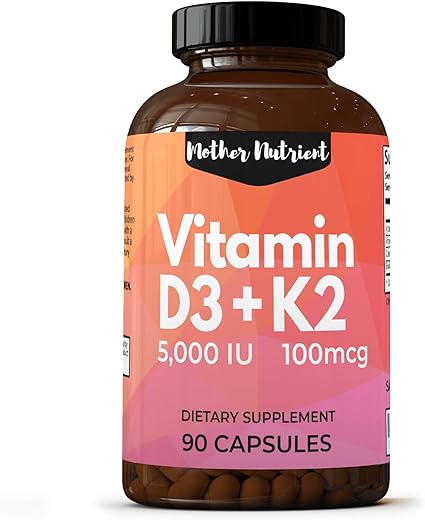
Book an Appointment with Nao Medical
If you’re interested in taking 50000 IU vitamin D3 weekly or want to learn more about vitamin D supplementation, book an appointment with Nao Medical. Our healthcare providers can help you determine the right dose of vitamin D for your needs and provide personalized recommendations for improving your overall health and well-being.
Book Now
Sources
- https://www.ncbi.nlm.nih.gov/pmc/articles/PMC3356951/
- https://www.mayoclinic.org/drugs-supplements-vitamin-d/art-20363792
Disclaimer: The information presented in this article is intended for general informational purposes only and should not be considered, construed or interpreted as legal or professional advice, guidance or opinion.
Vitamin D 5000 IU: Do You Need the Extra Strength Supplement?
- What is vitamin D 5000 IU?
- How much vitamin D do I need?
- How do I know if I have low vitamin D levels?
- Can you take too much vitamin D?
If you have any medical questions or concerns, please talk to your healthcare provider.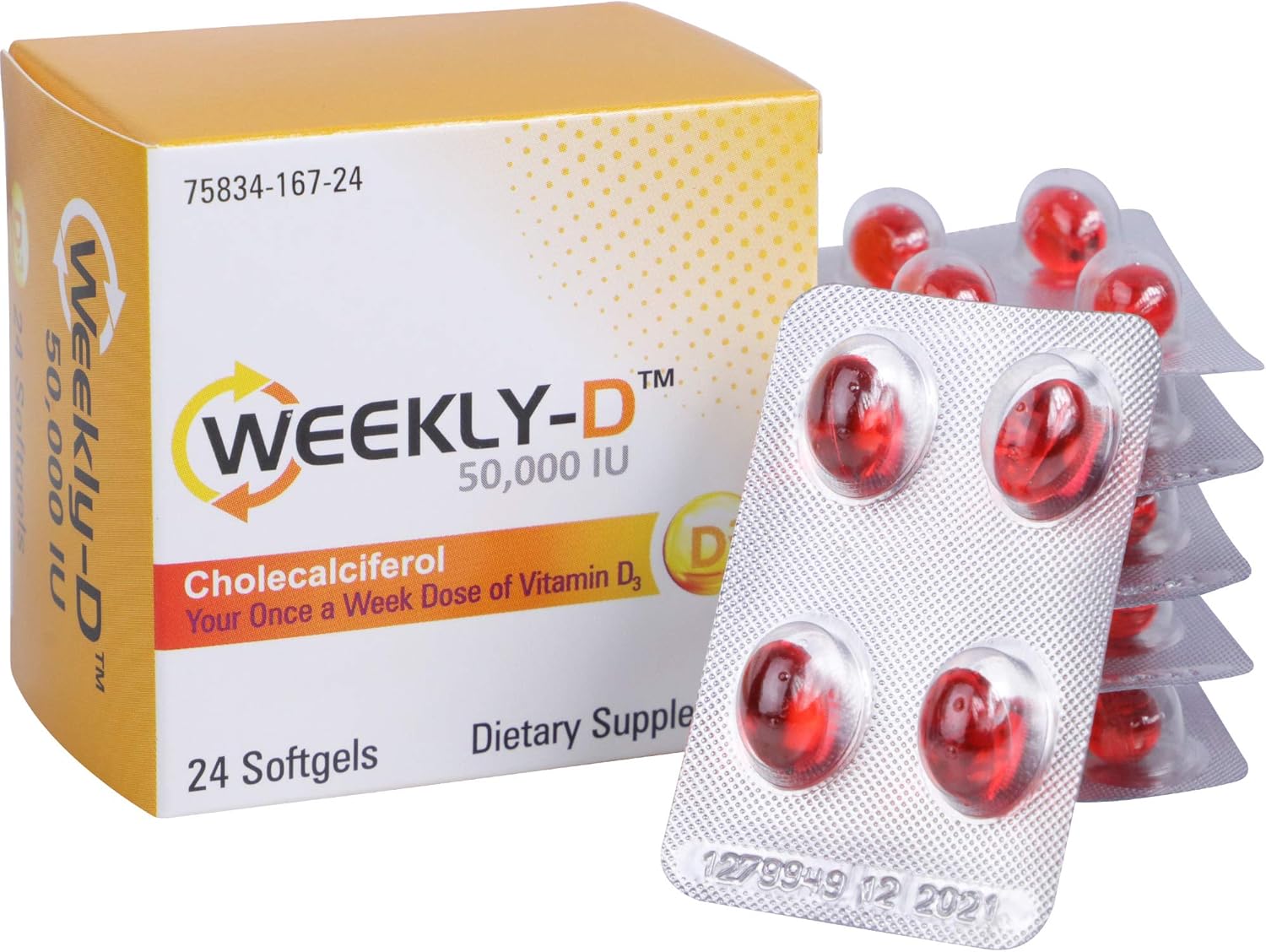 The articles on Health Guide are underpinned by peer-reviewed research and information drawn from medical societies and governmental agencies. However, they are not a substitute for professional medical advice, diagnosis, or treatment.
The articles on Health Guide are underpinned by peer-reviewed research and information drawn from medical societies and governmental agencies. However, they are not a substitute for professional medical advice, diagnosis, or treatment.
You may have seen them at your local drug store: vitamin D 5000 IU tablets, advertised as extra strength or high potency supplements to support healthy bones, muscles, and your immune system.
The truth is, we do need vitamin D to stay healthy, but 5000 IU (units) of vitamin D in a daily tablet is more than most people need.
The recommended maximum daily limit of vitamin D in healthy people is 4000 IU. That includes intakes from food, beverages, and supplements. Extra strength supplements are intended for people with low vitamin D levels.
Vitamin D is a nutrient essential for calcium level regulation, strong bones, and healthy immune function.
There are two ways people can get vitamin D: sun exposure and diet (Wimalawansa, 2018). You get most of your vitamin D from sun exposure. The rest comes from the diet. Most people need about 600 to 800 IU (units) of vitamin D per day through their diet (NIH, n.d.).
You get most of your vitamin D from sun exposure. The rest comes from the diet. Most people need about 600 to 800 IU (units) of vitamin D per day through their diet (NIH, n.d.).
Vitamin D 5000 IU is a high-dose supplement that can help treat vitamin D deficiency, which occurs when people don’t get enough vitamin D through the sun or their diet.
This happens quite frequently: people who live in northern climates or those who spend most of their time indoors often don’t get enough exposure to sunlight. What’s more, very few foods naturally contain vitamin D (Naeem, 2010).
The vitamin D 5000 IU supplements you see in your local drugstore typically contain vitamin D3, a form of vitamin D that is naturally found in fatty fish. Vitamin D2, the other form, is derived from plant sources. You’re more likely to see D3 in supplements, as research has shown that D3 is more effective than D2 in raising vitamin D levels (Tripkovic, 2017).
Does milk have vitamin D?
Vitamin D
Last updated: Mar 20, 2021
6 min read
For those with dietary limitations or inadequate sun exposure, taking vitamin D supplements can help them meet that daily requirement. However, taking too much vitamin D, can have toxic effects.
However, taking too much vitamin D, can have toxic effects.
Remember, the recommended daily limit for most people is 4000 IU (NIH, n.d.). Vitamin D 5000 IU supplements are at the high end of the spectrum. Typical doses of vitamin D supplements come in 400 IU, 800 IU, 1000 IU, and 2000 IU.
According to research, 42% of adults in the United States don’t get enough vitamin D, and people with darker skin are at an even higher risk; 82.1% of African Americans and 69.2% of Hispanics don’t get enough of the vitamin (Forrest, 2011). The darker your skin, the less vitamin D you make from sunlight exposure.
Most people in the U.S. consume less vitamin D than the recommended 600 to 800 IU per day (NIH, n.d.). Only a few food products naturally contain vitamin D, such as fatty fish and egg yolks. Vitamin D is added to many everyday foods, like milk and cereal, in a public health effort to help make sure everybody is getting enough each day.
Here are some everyday food products and the amount of vitamin D they contain (NIH, n. d.):
d.):
- Cod liver oil, 1 tablespoonz: 1,360 IU
- Salmon (sockeye), cooked, 3 ounces: 570 IU
- Trout (rainbow), farmed, cooked, 3 ounces: 645 IU
- Mushrooms, white, raw, sliced, exposed to UV light, ½ cup: 366 IU
- Egg, 1 large, with yolk: 44 IU
- Liver, beef, braised, 3 ounces: 42 IU
- Tuna fish (light), canned in water, drained, 3 ounces: 40 IU
- Sardines (Atlantic), canned in oil, drained, 2 sardines: 46 IU
- Cheese, cheddar, 1 ounce: 12 IU
- Ready-to-eat cereal, fortified with 10% of the DV for vitamin D, 1 serving: 8 IU
Check the nutrition label to see the exact amount of vitamin D a food product contains. The label will tell you how much of your daily vitamin D value is met by each serving. One helpful conversion tip to keep in mind is that 1 mcg equals 40 IU of vitamin D (NIH, n.d.).
For people who don’t typically eat many fish or milk products, vitamin D supplements can help meet the daily recommended requirement.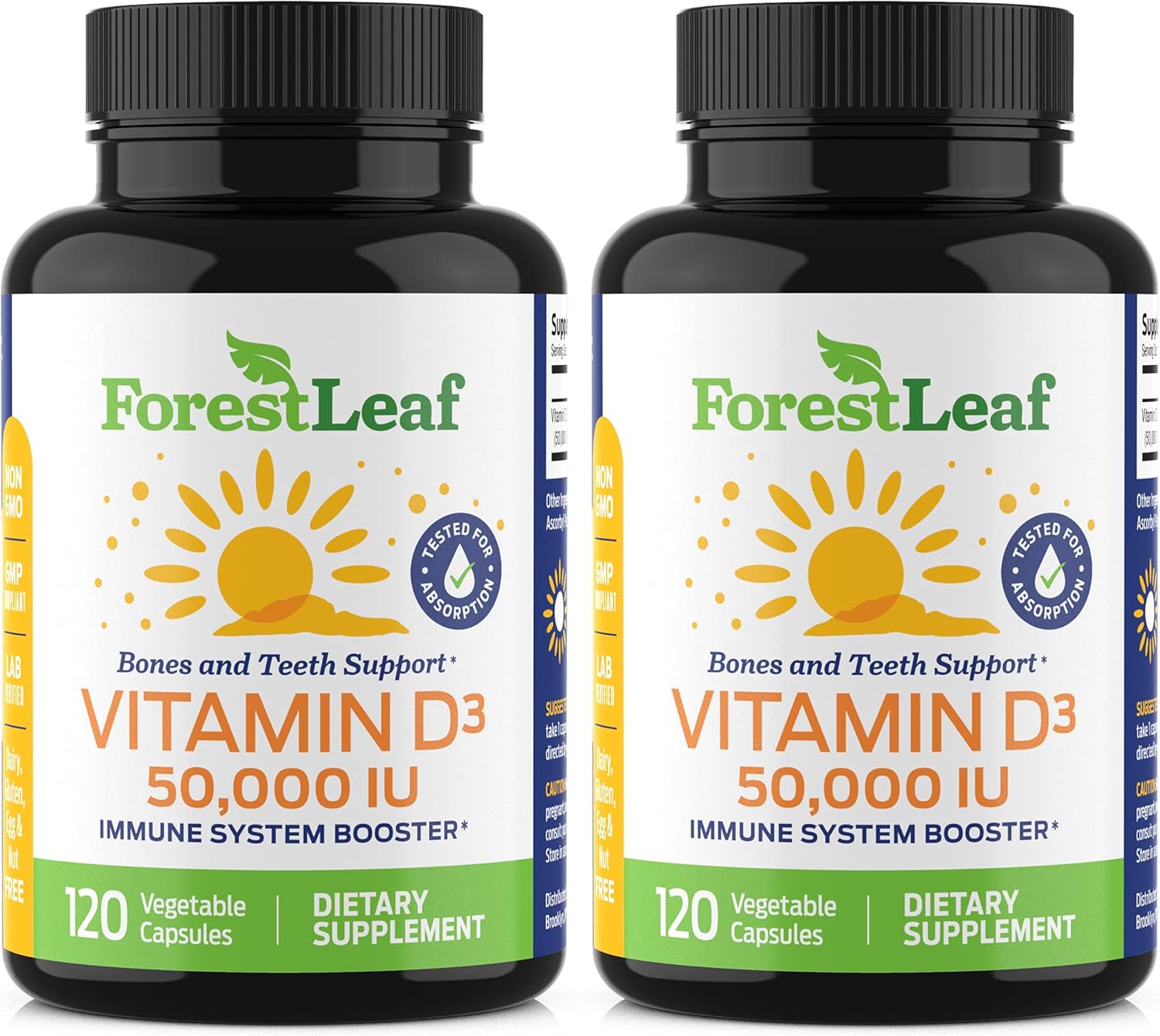
The best way to know is to get a vitamin D blood test. But not everyone needs to have their vitamin D levels tested, especially as testing can be expensive, and laboratories may test or report the levels of vitamin D in different ways.
Vitamin D deficiency: symptoms, treatment, and prevention
Vitamin D
Last updated: Oct 25, 2021
7 min read
Experts only recommend testing only for people at high risk for vitamin D deficiency, like those populations at high risk for developing low levels, or those with signs suggestive of a vitamin D problem (Kennel, 2010). Screening tests for vitamin D deficiency are not recommended (U.S. Preventive Service Task Force, 2021).
The majority of patients with low vitamin D don’t have symptoms. But for severe and prolonged vitamin D deficiencies, some common signs include (Sizar, 2020):
- Muscle weakness
- Fatigue
- Bone pain
- Fractures
The reference ranges for vitamin D blood levels are not well established. According to the NIH’s Office of Dietary Supplements and the Institute of Medicine (IOM), reference ranges are as follows (NIH, n.d.):
According to the NIH’s Office of Dietary Supplements and the Institute of Medicine (IOM), reference ranges are as follows (NIH, n.d.):
Suppose you have low vitamin D levels or vitamin D deficiency. In that case, your healthcare provider may suggest increasing your dietary intake through food products, sun exposure, or supplements, such as high-dose vitamin D 5000 IU pills.
Work with your doctor to determine if you need a vitamin supplement and how much of it.
If you overdo the supplements, you can get too much vitamin D. If you take supplements with a high amount of the vitamin, like vitamin D 5000 IU, it’s easier to go above the maximum daily intake of 4000 IU. Taking amounts higher than that can increase your risk of vitamin D side effects. Interestingly, getting too much vitamin D is always due to oral intake and not due to excessive sunlight exposure (Sizar, 2020).
Since vitamin D helps calcium absorption, the toxic effects from high doses often result from high calcium levels in your blood. That can interfere with heart and muscle function (Sadiq, 2020). Common side effects of vitamin D overdose include nausea, vomiting, muscle pain, and frequent urination (Sizar, 2020).
That can interfere with heart and muscle function (Sadiq, 2020). Common side effects of vitamin D overdose include nausea, vomiting, muscle pain, and frequent urination (Sizar, 2020).
If you’re wondering if you need to take vitamin D 5000 IU supplements, the answer depends on your vitamin D levels. If you suspect that you might have low vitamin D talk to your healthcare provider about whether vitamin D testing is right for you, especially if you fall into one of the high-risk categories. Should you have low vitamin D, your healthcare provider will recommend increasing your dietary intake, either through food or supplements. You shouldn’t take higher-than-recommended doses of vitamin D without first discussing it with your doctor.
- Forrest, K. Y., & Stuhldreher, W. L. (2011). Prevalence and correlates of vitamin D deficiency in US adults. Nutrition Research, 31(1), 48–54. doi: 10.1016/j.nutres.2010.12.001, https://www.ncbi.nlm.nih.gov/pubmed/21310306
- Holick M.
 F., Binkley N. C., Bischoff-Ferrari HA, Gordon CM, Hanley DA, Heaney RP, Murad MH, Weaver CM., Endocrine Society. (2011). Evaluation, treatment, and prevention of vitamin D deficiency: an Endocrine Society clinical practice guideline. Journal of Clinical Endocrinology and Metabolism, 96(7), 1911-30. doi: 10.1210/jc.2011-0385. Retrieved from https://pubmed.ncbi.nlm.nih.gov/21646368/
F., Binkley N. C., Bischoff-Ferrari HA, Gordon CM, Hanley DA, Heaney RP, Murad MH, Weaver CM., Endocrine Society. (2011). Evaluation, treatment, and prevention of vitamin D deficiency: an Endocrine Society clinical practice guideline. Journal of Clinical Endocrinology and Metabolism, 96(7), 1911-30. doi: 10.1210/jc.2011-0385. Retrieved from https://pubmed.ncbi.nlm.nih.gov/21646368/ - Kennel, K., Drake, M., & Hurley, D. (2010). Vitamin D Deficiency in Adults: When to Test and How to Treat. Mayo Clinic Proceedings, 85(8), 752-758. doi: 10.4065/mcp.2010.0138. Retrieved from https://pubmed.ncbi.nlm.nih.gov/20675513/
- Naeem, Z. Vitamin d deficiency- an ignored epidemic. International Journal of Health Science, 4(1):V-VI. Retrieved from https://pubmed.ncbi.nlm.nih.gov/21475519/
- Office of Dietary Supplements (ODS). (January, 2021). Vitamin D Fact Sheet for Consumers. NIH. Retrieved on February 8, 2021 from https://ods.
 od.nih.gov/factsheets/VitaminD-Consumer/
od.nih.gov/factsheets/VitaminD-Consumer/ - Office of Dietary Supplements (ODS). (October, 2020). Vitamin D Fact Sheet for Health Professionals. NIH. Retrieved on February 16, 2021 from https://ods.od.nih.gov/factsheets/VitaminD-HealthProfessional/
- Sadiq N. M., Naganathan S., Badireddy M. (2021). Hypercalcemia. StatPearls. Retrieved on February 16, 2021 from https://www.ncbi.nlm.nih.gov/books/NBK430714/#_NBK430714
- Sizar O., Khare S., Goyal A., et al. (2020). Vitamin D Deficiency. StatPearls. Retrieved on February 1, 2021 from https://www.ncbi.nlm.nih.gov/books/NBK532266/
- Tripkovic, L., Wilson, L. R., Hart, K., Johnsen, S., de Lusignan, S., Smith, C. P., Bucca, G., Penson, S., Chope, G., Elliott, R., Hyppönen, E., Berry, J. L., & Lanham-New, S. A. (2017). Daily supplementation with 15 μg vitamin D2 compared with vitamin D3 to increase wintertime 25-hydroxyvitamin D status in healthy South Asian and white European women: a 12-wk randomized, placebo-controlled food-fortification trial.
 The American Journal of Clinical Nutrition, 106(2), 481–490. doi: 10.3945/ajcn.116.138693. Retrieved from https://pubmed.ncbi.nlm.nih.gov/28679555/
The American Journal of Clinical Nutrition, 106(2), 481–490. doi: 10.3945/ajcn.116.138693. Retrieved from https://pubmed.ncbi.nlm.nih.gov/28679555/ - U.S. Preventive Service Task Force. Final Recommendation Statement: Vitamin D Deficiency in Adults: Screening. Retrieved from https://www.uspreventiveservicestaskforce.org/uspstf/document/RecommendationStatementFinal/vitamin-d-deficiency-screening#bootstrap-panel–1
- Wimalawansa, S. J., Razzaque, M. S., & Al-Daghri, N. M. (2018). Calcium and vitamin D in human health: Hype or real? The Journal of Steroid Biochemistry and Molecular Biology, 180, 4–14. doi: 10.1016/j.jsbmb.2017.12.009. Retrieved from https://pubmed.ncbi.nlm.nih.gov/29258769/
Yael Cooperman is a physician and works as a Senior Manager, Medical Content & Education at Ro.
Composition, before or after meals, dosage, analogues
Publication date: 04/19/2022 POSSIBLE SIDE EFFECTS. A SPECIALIST’S CONSULTATION IS REQUIRED. Rome” composition
Rome” composition
The article is dedicated to everyone who wakes up already tired and considers himself a depressed person. Perhaps, in fact, you are able to get enough sleep and enjoy life. In such conditions, it is recommended to take a blood test for vitamin D.
Deficiency of vitamin D, or cholecalciferol, does not appear immediately. Its harbingers can be constant drowsiness and fatigue, even immediately after waking up, excessive sweating during sleep, frequent colds.
Let’s talk about the benefits of Aquadetrim. We will share information about the composition of the product, tell you about the dosage, what is the difference between the composition of drops and tablets.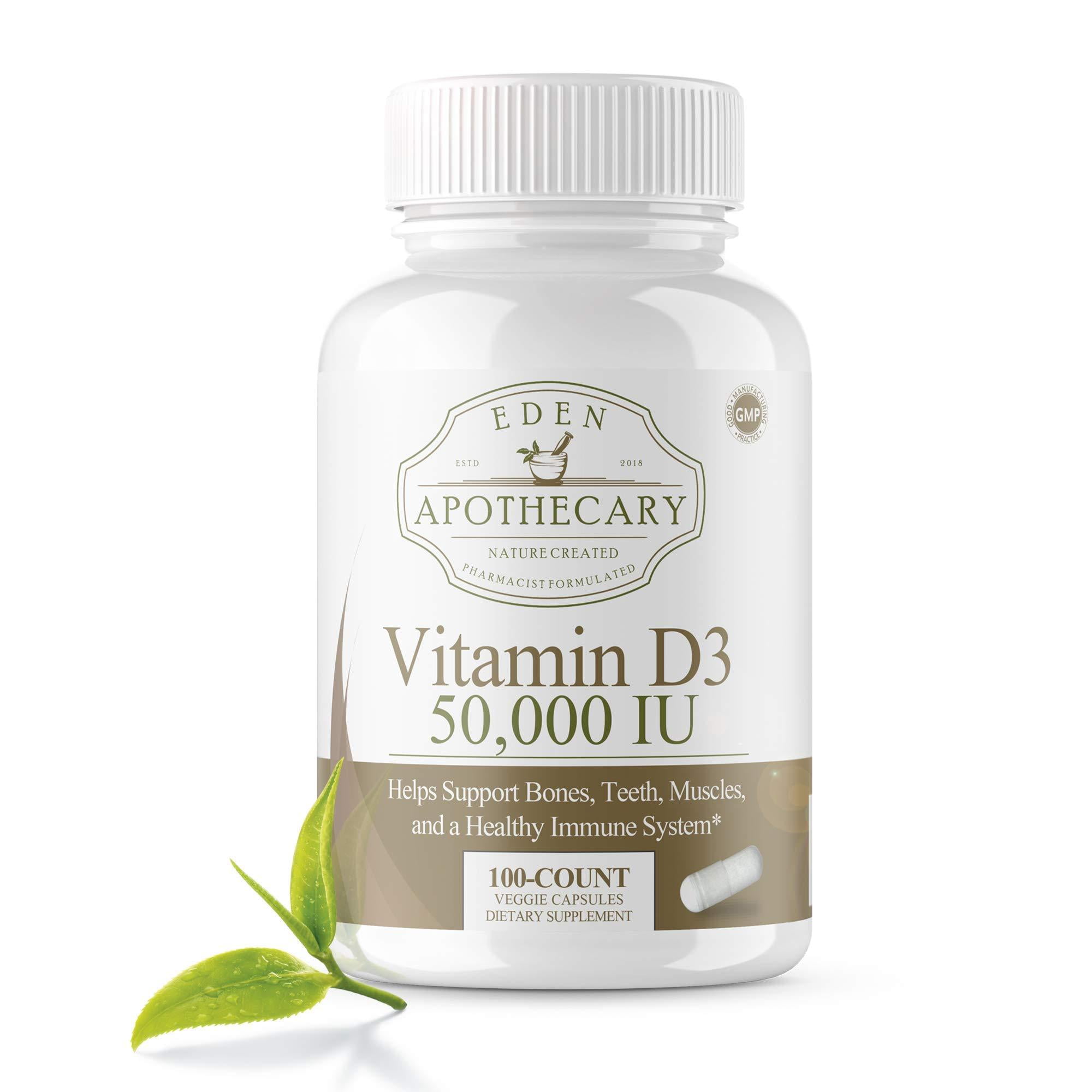 We will also share in detail information about the methods and rules for using Aquadetrim. And also, are there any side effects, is it suitable for pregnant women and newborns, and how does it differ from analogues.
We will also share in detail information about the methods and rules for using Aquadetrim. And also, are there any side effects, is it suitable for pregnant women and newborns, and how does it differ from analogues.
All products Aquadetrim
27 reviews
“Aquadetrim” composition
Tablets : active ingredient – vitamin D3 100 SD / S dry at a dosage of 500 IU per 1 tab, auxiliary components – D,L-α-tocopherol, modified starch, sucrose, crystalline sodium ascorbate, medium chain triglycerides, silicon dioxide, mannitol, sodium benzoate.
Drops : active ingredient – colecalciferol (vit. D3) at a dosage of 500 IU per drop, auxiliary components – macrogol glyceryl ricinoleate, sucrose, sodium hydrogen phosphate dodecahydrate, citric acid monohydrate, anise flavor, benzyl alcohol, purified water.
As can be seen, the content of the active substance in 1 drop and 1 tablet is equivalent.
You may be interested in: Which foods contain the most vitamin D
Aquadetrim how to use
Association of Endocrinologists FGBU “ENDOCRINOLOGICAL SCIENTIFIC CENTER” of the Ministry of Health of the Russian Federation.
Where the recommended drug for treating vitamin D deficiency is cholecalciferol (D3).
Aqueous and oily solutions to be taken according to daily allowances to treat or maintain vitamin D levels.
To correct vitamin D deficiency (less than 20 ng/mL) in adults, 50,000 IU of vitamin D (100 drops) per week within 8 weeks. If the patient is comfortable, he can take the drug every day for 6000-8000 IU (12-15 drops) for 8 weeks.
A dose of 50,000 IU of vitamin D every 2 weeks maintains blood cholecalciferol levels above 30 ng/mL (normal). There are no serious side effects. However, experts do not recommend taking more than 2,000 IU per day unless there are significant risk factors for vitamin D deficiency.
Doctors prescribe Aquadetrim for coronavirus based on test results.
“Aquadetrim” during pregnancy
Pregnant women, according to the instructions for the drug, for preventive purposes, use daily 500 IU (1 drop) / day throughout pregnancy, or 1000 IU (2 drops) / day, starting from 28 weeks pregnancy.
“Aquadetrim” for newborns
In order to prevent term newborns from 4 weeks of life to 2-3 years, with proper care and sufficient exposure to fresh air, the drug is prescribed at a dose of 500 IU (1 drop) / day.
Premature babies from 4 weeks of age, twins and children living in adverse conditions are prescribed 1000-1500 IU (2-3 drops) / day.
In summer, the dose can be reduced to 500 IU (1 drop)/day.
Do you want to understand analogues of drugs in order to skillfully select drugs for your budget? Our manual from expert pharmacists “Analogues of popular drugs” will help you with this! Getting a training manual is easy: subscribe to our social networks and write “analogues” in the messages.
Megapharmacy in social networks: VKontakte, Telegram, OK, Viber
Aquadetrim side effects
Overdose of colecalciferon is also a manifestation of side effects.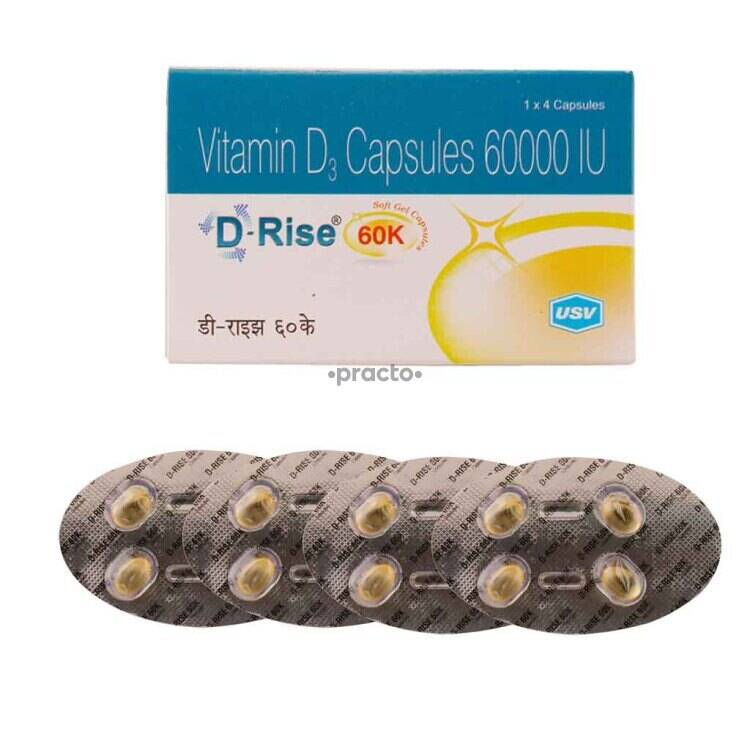 Overdose symptoms are: loss of appetite, nausea, vomiting, constipation, anxiety, thirst, diarrhea, intestinal colic.
Overdose symptoms are: loss of appetite, nausea, vomiting, constipation, anxiety, thirst, diarrhea, intestinal colic.
Vigantol or Aquadetrim, which is better
Both drugs are analogues of each other. They are both listed in the clinical guidelines for the treatment and prevention of vitamin D deficiency. The difference between the drugs lies in their form of release. Both drugs have a liquid form, but Aquadetrim is a water-alcohol solution, and Vigantol is an oil solution. The composition of the oil form contains only the vitamin itself and the oil. Vitamin D is fat soluble, so it is best absorbed in its oil form.
All products Vigantol
20 reviews
So, we talked about the drug “Aquadetrim” and would like to summarize.
Aquadetrim is a water-alcohol solution containing colecalciferol at a dosage of 500 IU per 1 drop. It is indicated for use in the treatment and prevention of vitamin D deficiency. The method of application is quite simple, since it is used regardless of food intake 1 time per day. For the prevention of deficiency, it is prescribed to both pregnant women and newborn children.
For the prevention of deficiency, it is prescribed to both pregnant women and newborn children.
The main side effect of “Akvadetrim” are overdose symptoms. These include nausea, vomiting, headache, etc.
When choosing between two analogues of “Aquadetrim” or “Vigantol”, it is worth considering that the preparations are different in the composition of the auxiliary components.
Ask an expert about the topic of the article
Still have questions? Ask them in the comments below and our experts will answer you. You can also share your experience with other Megatips readers.
Share mega tip
Like this article? Tell mom, dad, grandma and aunt Galya from the third entrance
Copy link
Vitamin D – why is it needed and how to take it
Other
- Elena Kopylova
Siberian Wellness
Website partner news
In connection with the coronavirus pandemic, even in sources far from medicine, numerous reports began to appear that vitamin D helps to avoid infection, and those who are ill to endure COVID-19in mild form.
We have known since childhood that vitamin D helps with the absorption of calcium. In the USSR, it was given to children to prevent rickets, remember, in the cartoon about octopuses: “Nothing scares the world like the well-known fish oil”?
Fish oil contains vitamin A and vitamin D. So at one time the latter was discovered: the American biochemist Elmer McCollum in 1922 set up an experiment with a portion of fish oil, where vitamin A was neutralized. The dogs to whom he gave this product were successfully cured of rickets. So it was proved that it was not vitamin A that was responsible for the cure for rickets, but another vitamin unknown at that time. Since it was the fourth vitamin discovered by science, it was named the fourth letter of the Latin alphabet – D.
A lot of research is currently underway to study the effects of vitamin D on human health.
Of course, science now knows much more about vitamins than 100 years ago. However, many people call vitamin D mysterious because its role in the body is not yet fully understood.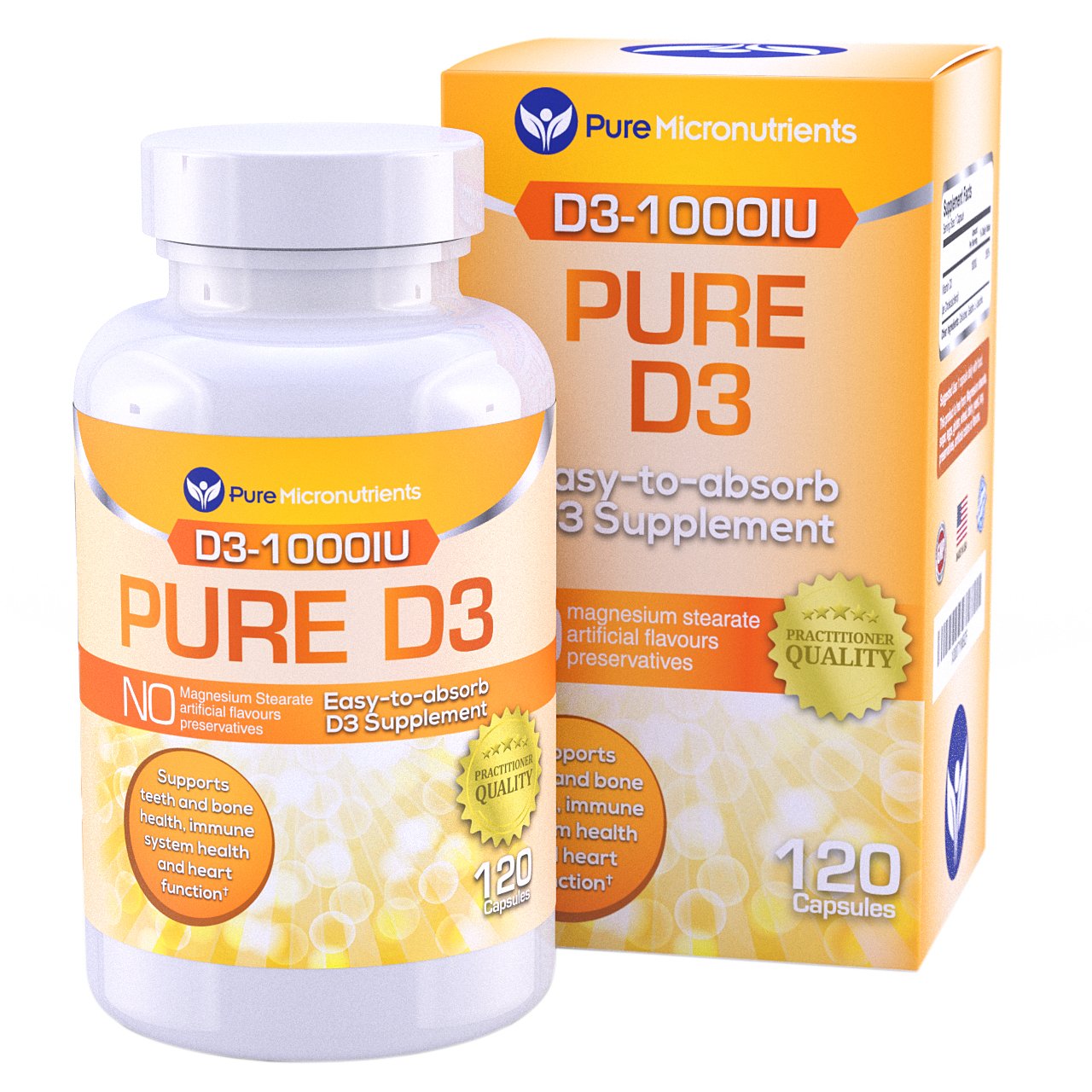 One thing is clear – the absorption of calcium and phosphorus, this role is not limited.
One thing is clear – the absorption of calcium and phosphorus, this role is not limited.
For example, in 2008, WHO published a review on the relationship between vitamin D and cancer: evidence shows a significant increase in the risk of many types of cancer in the presence of vitamin D deficiency.
Another study found a 60% reduction in overall cancer risk in healthy postmenopausal women treated with vitamin D and calcium compared with placebo over a four-year follow-up period. Can you imagine? By 60%!
A Chinese study published on April 3, 2020 showed that supplementation of vitamin D when deficient in the body reduces the release of pro-inflammatory cytokines at sites of inflammation and reduces inflammatory responses. But it is precisely the “cytokine storm”, , that is, excessive, “hysterical” release of pro-inflammatory cytokines in the lungs, heart, and liver is the leading cause of death from coronavirus infection in young people without chronic diseases.
What is vitamin D ?
Vitamin D is a fat-soluble organic compound that is synthesized by human skin under the influence of ultraviolet rays, and is also produced from substances that enter the body with food. It is unique in that it simultaneously acts as both a vitamin and a hormone.
The main purpose of vitamin D in the human body is to ensure the absorption of calcium and phosphorus from food in the small intestine.
In addition, in the course of scientific research, it was found that receptors capable of interacting with vitamin D exist in almost all organs and tissues of the human body, including cells of the immune system, cells of the pancreas that produce insulin, in the intestines, and in the prostate gland. , in the mammary glands of women. It plays an important role in the regulation of cell division and growth, as well as immune defense against infections and cancer.
In the elderly, vitamin D maintains the muscle strength needed to maintain normal gait, posture, balance, and fall protection. For children, vitamin D is important not only as a factor in bone growth, but also as a component of protection against infections.
For children, vitamin D is important not only as a factor in bone growth, but also as a component of protection against infections.
This is an important vitamin for life.
How do you know if you are getting enough vitamin D ?
According to nutritionists whose patients undergo laboratory tests, about 80% of the population in Russia and Ukraine suffer from a lack of vitamin D.
The WHO also agrees: according to this organization, 25(OH)D deficiency is now a pandemic affecting the majority of the general population, including children, adolescents, adults, pregnant and lactating women, menopausal women and the elderly.
The easiest way to find out how your vitamin D status is is to take a serum 25[OH]D (25-hydroxy-cholecalciferol) concentration test.
Its minimum value, which ensures bone health in most people in the population, is 20 ng / ml (50 nmol / l)
Optimal serum 25(OH)D levels for cancer prevention have been reported to be 40-60 ng/mL (100-150 nmol/L).
Thus, a person needs to maintain the level of 25[OH]D at the level of 30-50 ng/ml (75-120 nmol/l).
How to do it?
The human body receives vitamin D in two ways: from food and through synthesis in the skin under the influence of the sun – ultraviolet rays.
Vitamin D is found in cod liver, salmon, fish oil, egg yolks, wild mushrooms, especially chanterelles (only raised in natural light), herring and some plant foods. However, even with the most balanced diet, it is almost impossible to get more than 20% of the daily value of vitamin D from food.
The easiest way to get the right dose for the body – regular exposure to the sun. To do this, it is necessary to be with the limbs open to the sun’s rays in the sun between 10 am and 3 pm for at least 15 minutes a day.
At first glance, nothing complicated, but sunlight at the 37th parallel and above (and Russia is located in these latitudes) does not allow you to get enough vitamin D, especially in the winter months.
Above the 50th parallel, solar radiation is not enough to meet the need for vitamin D, even in summer.
In addition, modern sunscreens with a factor of UVF-15 and above reduce the synthesis of vitamin D in the skin by 95-98%. That is, hunting for a vitamin should go out without sunscreen.
Thus, supplements containing vitamin D can become a source that maintains the normal level of this vital substance in our body.
Of course, before taking it would be good to do a laboratory analysis.
First, to avoid the risk of overdose, although it is almost impossible to get an overdose of vitamin D. The maximum recorded dose of vitamin D received by a person as a result of sun exposure is 10,000 IU. At the same time, chronic use of a dose of about 40,000 IU has a toxic effect on the body. That is, you can get an overdose of vitamin D only if you eat 100 tablets of vitamin supplements every day for a long time. It is unlikely that someone will scoff at themselves like that)).
Secondly, in order to raise its level to normal in case of a serious vitamin D deficiency. The fact is that with a serious deficiency of vitamin D, its level cannot be raised with low doses of drugs, even if taken for a long time. Only taking “shock” doses of vitamin D3 preparations helps to raise its level, while shock doses are not only effective, but also safe.
LOW LEVEL
If the level of vitamin D (25-hydroxycalciferol) in the blood is below 15-20 ng / ml (38-50 nmol / l), then it is necessary to take a loading dose of 50,000 IU (fifty thousand International Units) once a week for 6-8 weeks. Otherwise, the level will not be raised. After that, you need to do a second blood test to check the effect.
AVERAGE LEVEL
If the initial level is 20-30 ng / ml (50 -75 nmol / l), then take 5000 IU (five thousand) per day for 2-3 months, after which – check the result again.
NORMAL LEVEL
If the level is 30-40 ng / ml (75-100 nmol / l), then take 2000 IU per day daily or in courses during the cold season. It is this level that is considered optimal, and it should be maintained.
It is this level that is considered optimal, and it should be maintained.
PROBLEM OF CHOICE
When choosing a vitamin D preparation, pay attention to the following:
- only vitamin D3 preparations should be used;
- can be taken in both water-soluble and fat forms of the drug;
- when choosing a dosage, be guided by price and ease of use (so as not to drink too many tablets at a time).
WARNING: High doses of vitamin D3 may cause stomach upset in some people. Start small (1/10 – 1/20 recommended) to also check if you are allergic to the drug.
If you have any acute or chronic diseases, then you should be careful about taking any vitamins. Be sure to check with your healthcare provider before taking any vitamin supplements.
And finally: do athletes need vitamin D ?
The importance of vitamin D for the physical performance of athletes was discovered as early as the 1920s. At that time it was already known that increased exposure to the sun strengthens the skeletal system and improves the general physical condition of patients. Thus, light therapy should have brought similar results among athletes.
At that time it was already known that increased exposure to the sun strengthens the skeletal system and improves the general physical condition of patients. Thus, light therapy should have brought similar results among athletes.
In the 1920s, exposing players to ultraviolet lamps became common practice. In the 1940s, studies were made of students who were regularly exposed to ultraviolet lamps for six weeks. They improved their cycling performance by 13%. They also showed great endurance in long-distance races, pole vault and steeplechase.
The lack of vitamin D in the body of athletes immediately affects the inability to meet the specified standards. Those athletes who were found to be significantly deficient in vitamin D performed much less well in any competition. They get tired faster, more irritable. They begin to tremor faster in the muscles after cardio. In addition, they get sick more often and a higher percentage of injuries is recorded among them.
The data of numerous studies were analyzed and it was concluded that an increase in the level of vitamin D (to normal) helps to reduce inflammation, pain and myopathy in the muscles, increases the concentration of AT F and improves muscle protein synthesis, and also has a positive effect on strength, speed, power and other physical characteristics of athletes.

 F., Binkley N. C., Bischoff-Ferrari HA, Gordon CM, Hanley DA, Heaney RP, Murad MH, Weaver CM., Endocrine Society. (2011). Evaluation, treatment, and prevention of vitamin D deficiency: an Endocrine Society clinical practice guideline. Journal of Clinical Endocrinology and Metabolism, 96(7), 1911-30. doi: 10.1210/jc.2011-0385. Retrieved from https://pubmed.ncbi.nlm.nih.gov/21646368/
F., Binkley N. C., Bischoff-Ferrari HA, Gordon CM, Hanley DA, Heaney RP, Murad MH, Weaver CM., Endocrine Society. (2011). Evaluation, treatment, and prevention of vitamin D deficiency: an Endocrine Society clinical practice guideline. Journal of Clinical Endocrinology and Metabolism, 96(7), 1911-30. doi: 10.1210/jc.2011-0385. Retrieved from https://pubmed.ncbi.nlm.nih.gov/21646368/ od.nih.gov/factsheets/VitaminD-Consumer/
od.nih.gov/factsheets/VitaminD-Consumer/ The American Journal of Clinical Nutrition, 106(2), 481–490. doi: 10.3945/ajcn.116.138693. Retrieved from https://pubmed.ncbi.nlm.nih.gov/28679555/
The American Journal of Clinical Nutrition, 106(2), 481–490. doi: 10.3945/ajcn.116.138693. Retrieved from https://pubmed.ncbi.nlm.nih.gov/28679555/